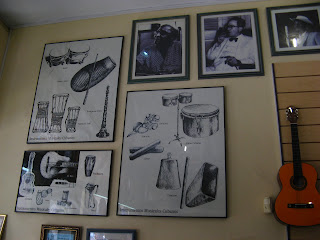Founded in the early 1990s by Salvador Gonzales, a local artist, Callejón de Hamel aspires to promote the artistic abilities of the Afro-Cuban population.
The physical space itself is extraordinary: murals, sculptures and assorted artistic-creations are scattered throughout the alley. At times, the vividly bright colors are mesmerizing.
Although events are also hosted on Friday and Saturday, Sunday is the most bustling day at Callejón de Hamel. Every Sunday, different, local rumba artists perform free concerts for the public.
Rumba is one of the most distinct musical genres in Cuba: while it is difficult to define rumba, as it simply needs to heard to be understood, in essence, rumba is a heavily African-influenced Cuban music.
The offbeat rhythms of rumba (as in, rhythms that do not hold a steady two-four beat) make the music very unique, rhythmically. As a drummer, rumba is so engaging because the percussion section is not locked down to a steady beat. That is to say, the rhythm of rumba music is very “free” and “open” – in a sense, the rhythm of rumba has the same sort of mobility that a melody typically enjoys.
The performance I attended was very enjoyable; although, truth be told, it was not the best rumba performance I saw in Cuba. Surely, Callejón de Hamel is an “authentic” Cuban experience; nevertheless, as it is listed on Lonely Planet’s “Must See In Havana” list, the place is, not surprisingly, swamped with tourists.
This over-exploitation explains why the “premier” rumba players no longer perform at Callejón de Hamel. That said, the space is stunningly beautiful, the music is enjoyable, and I have never been to anywhere quite like Callejón de Hamel. I wholeheartedly recommend a visit to the place.
By showcasing the most talented Afro-Cuban artists and musicians, Callejón de Hamel promotes the development and growth of the creative arts in Cuba society. Despite its recent “guidebook celebrity status,” Callejón de Hamel is an integral part of the Afro-Cuban community and well-worth a visit!


















































